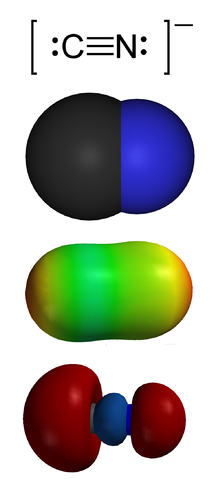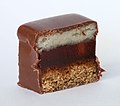tree; other species that produce cyanogenic glycosides are sorghum (from which dhurrin, the first cyanogenic glycoside to be identified, was first isolated)...
17 KB (2,129 words) - 11:54, 15 June 2024
Cyanide (redirect from Cyanogenic)
cyanide are known as cyanogenic compounds. In plants, cyanides are usually bound to sugar molecules in the form of cyanogenic glycosides and defend the plant...
35 KB (3,927 words) - 03:48, 25 July 2024
shows cyanogenic glycosides being beneficial to the larvae many still argue that this metabolite can do harm. To help in determining whether cyanogenic glycosides...
23 KB (2,992 words) - 02:08, 11 November 2023
lectins, and cyanogenic glycosides, which may be toxic if consumed raw. The seeds and all green parts of the plant contain cyanogenic glycosides. Consumption...
18 KB (1,746 words) - 18:56, 2 June 2024
Acacia sensu lato (section Cyanogenic glycosides)
Acacia in the Americas contain cyanogenic glycosides, which, if exposed to an enzyme which specifically splits glycosides, can release hydrogen cyanide...
38 KB (4,080 words) - 23:05, 3 July 2024
Sambucus plants produce cyanogenic glycosides, which have toxic properties. Ingesting a sufficient quantity of cyanogenic glycosides from berry juice, flower...
23 KB (2,395 words) - 20:16, 18 April 2024
consumption. Like many common foods, flax contains small amounts of cyanogenic glycoside, which is nontoxic when consumed in typical amounts. Typical concentrations...
50 KB (5,659 words) - 17:23, 19 June 2024
green-branched variant requires treatment to remove linamarin, a cyanogenic glycoside occurring naturally in the plant, which otherwise may be converted...
34 KB (4,349 words) - 23:57, 8 August 2024
in fresh, dried, and canned versions. Raw bamboo shoots contain cyanogenic glycosides, natural toxins also contained in cassava. The toxins must be destroyed...
25 KB (2,798 words) - 05:11, 5 July 2024
strong bitter flavour caused by the presence of amygdalin, a toxic cyanogenic glycoside which has to be detoxified before the kernels can be used. The cores...
2 KB (169 words) - 04:47, 17 April 2024










